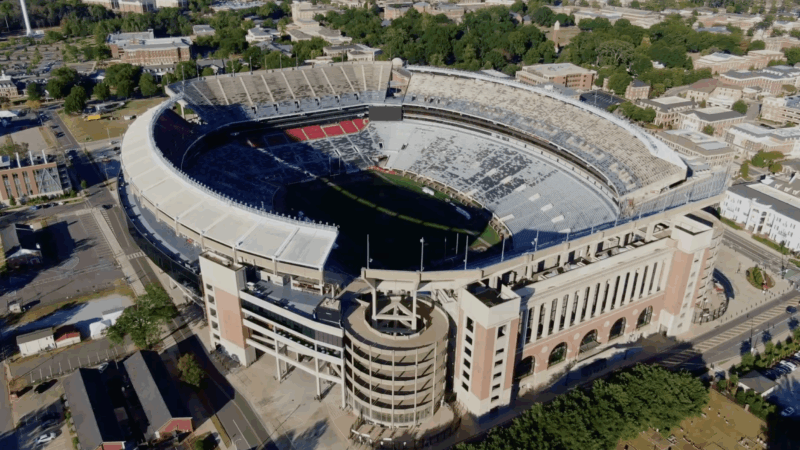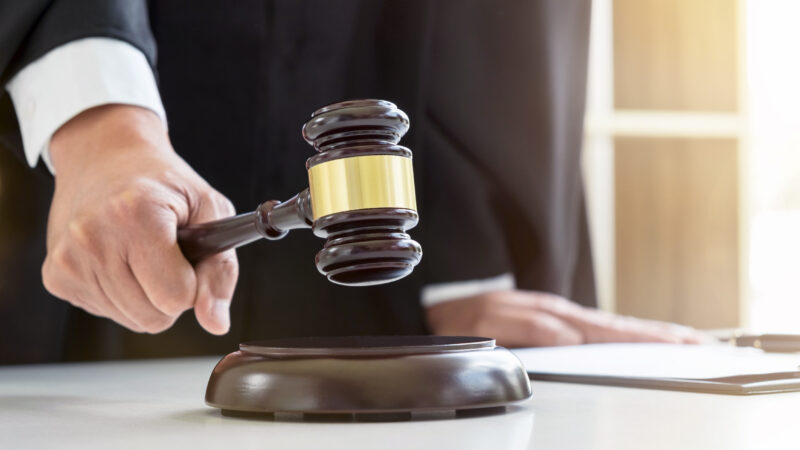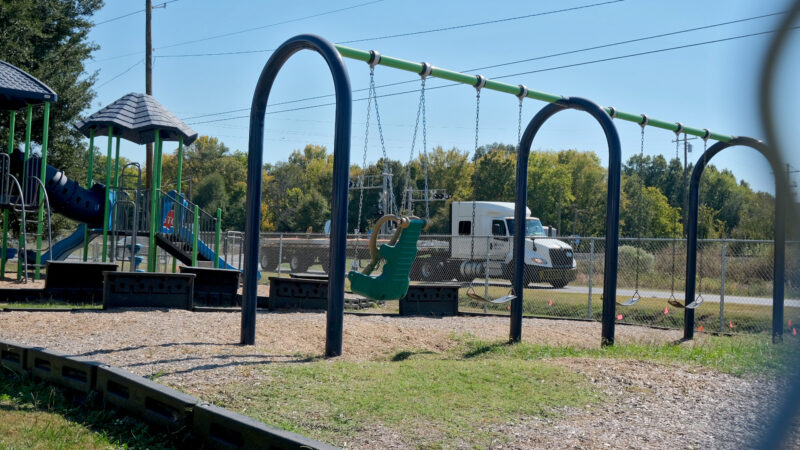Kirk shooting videos spread online, even to viewers who didn’t want to see them
Just minutes after Charlie Kirk was shot at an event at Utah Valley University last week, videos capturing the moment the bullet struck him began appearing online. They quickly racked up millions of views.
“We are not wired as human beings, biologically, historically — we have not evolved in a way that we are capable of processing those types of violent imagery,” Utah Gov. Spencer Cox said at a recent press conference. “This is not good for us. It is not good to consume.”
For many online, seeing the videos of Kirk’s shooting wasn’t a choice. The event in Utah was being livestreamed, and thousands of people in the audience had smartphones. Even without searching them out, people were confronted with the graphic footage in their social media feeds — sometimes playing automatically.
“Social media and violent imagery often go together these days,” said Emerson Brooking, director of strategy and a senior resident fellow at the Atlantic Council’s Digital Forensic Research Lab. “This took place where everyone could see it and it was intended that everyone would see it.”
Images of graphic violence have long circulated online, from propaganda videos made by ISIS showing the executions of hostages to first-person footage posted by mass shooters to scenes of war.
But people used to have to actively seek out such content. That’s not the case anymore.
After the Kirk shooting, “people really had to be vigilant about avoiding these images,” said Roxane Cohen Silver, a professor of psychology, public health and medicine at the University of California, Irvine.
The toll of seeing violent images
Silver researches the mental and physical health impacts of traumatic events, including terrorist attacks, school shootings and natural disasters. She said there’s no question: seeing graphic imagery, especially repeatedly, is not good for us.
“The clearest message that I have after studying the impact of media exposure to tragedies since the Columbine High School shooting…is that there is no psychological benefit to viewing graphic, gruesome images of violence,” she said. “For many, many people, it is associated with distress, anxiety, emotional numbness, nightmares, flashbacks, hypervigilance, symptoms of acute stress, symptoms over time of post-traumatic stress.”
While the costs are clear, this kind of content can feel inescapable today.
“It’s remarkable how much graphic violent media is just part of politics now,” said Nicole Hemmer, a political historian at Vanderbilt University. “I think that it’s difficult to understand people’s emotional response to and connection to politics right now if you don’t see some of the really graphic and heinous imagery that they’re exposed to.”
It’s hard to quantify the impact of that exposure on people’s political views. The gold standard scientific approach — showing people violent content and seeing how they respond — would be unethical.
But Hemmer says seeing content like the videos of the Kirk shooting, or another video that circulated widely this month showing the fatal stabbing of a Ukrainian refugee in Charlotte, N.C., does have consequences for viewers. Those include heightened emotions, feelings of fear and vulnerability, and calls for revenge.
“You can see that in the reaction among people who are responding to Kirk’s assassination saying that blood has to meet blood,” Hemmer said.
That’s raised concerns that the proliferation of graphic imagery online could make violent acts seem more in bounds.

How Americans feel about political violence
“This is the great fear: that some people might come to think that this is acceptable in our politics and in our society. That if you strongly disagree with someone, if you find a figure especially odious, then this is a permissible outcome,” Brooking said.
“The vast majority of Americans do not like the idea of political violence,” said Lilliana Mason, a political science professor at Johns Hopkins University. Her research, based on nationally representative surveys, has found that 80% to 90% of Americans say it’s never acceptable to use violence to achieve political goals — a number that’s remained pretty steady since 2017.
But the answer changes when researchers ask about retaliation. Mason’s surveys have found that up to 60% of Americans say violence may be justified if people from the other political party commit a violent act first.
“Basically, nobody wants to start violence, but if violence has already begun, then people are much more open to engaging in it,” Mason said.
For Hemmer, another troubling aspect is that some people are using these gruesome videos to raise their own profiles.
“Social media, which is where these images are being shared and these videos are being shared, rewards this kind of extreme content. People aren’t just sharing it because they want people to have this communal experience of having seen and witnessed this terrible event. But they are making money off of it. They’re gaining followers off of it,” she said.
“They are part of an outrage cycle…in which if you are out there sharing some of the most gruesome videos of the Charlotte murder, of Kirk’s assassination, then you are gaining credibility and influence in that social media ecosystem,” she said.
Alabama Power seeks to delay rate hike for new gas plant amid outcry
The state’s largest utility has proposed delaying the rate increase from its purchase of a $622 million natural gas plant until 2028.
Former U.S. Sen. Doug Jones announces run for Alabama governor
Jones announced his campaign Monday afternoon, hours after filing campaign paperwork with the Secretary of State's Office. His gubernatorial bid could set up a rematch with U.S. Sen. Tommy Tuberville, the Republican who defeated Jones in 2020 and is now running for governor.
Scorching Saturdays: The rising heat threat inside football stadiums
Excessive heat and more frequent medical incidents in Southern college football stadiums could be a warning sign for universities across the country.
The Gulf States Newsroom is hiring an Audio Editor
The Gulf States Newsroom is hiring an Audio Editor to join our award-winning team covering important regional stories across Mississippi, Alabama and Louisiana.
Judge orders new Alabama Senate map after ruling found racial gerrymandering
U.S. District Judge Anna Manasco, appointed by President Donald Trump during his first term, issued the ruling Monday putting a new court-selected map in place for the 2026 and 2030 elections.
Construction on Meta’s largest data center brings 600% crash spike, chaos to rural Louisiana
An investigation from the Gulf States Newsroom found that trucks contracted to work at the Meta facility are causing delays and dangerous roads in Holly Ridge.









